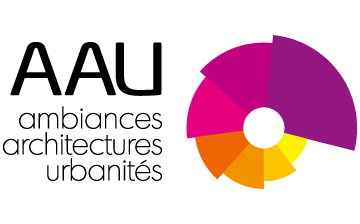La modernité tropicale face aux risques sismiques. Histoires d’une modernité située et stratégies d’adaptabilité à partir des groupes scolaires de Guadeloupe (1930, 1950-65)
Tropical modernity in the face of earthquake risks. Histories of a situated modernity and adaptability strategies bases on school infrastructures in Guadeloupe (1930, 1950-65)
Financement : Ministère de la Culture (Direction générale des patrimoines)
Responsable(s) scientifique : Sophie Paviol, ENSA Grenoble, Laboratoire Cultures Constructives, LabEx AE&CC. Equipe : Alexandre de la Foye (ENSA Nantes) et Jean-Christophe Grosso (ENSA Grenoble)
Contrat de recherche débuté en décembre 2018
FR
Ce projet prend acte du « Plan Séisme Antilles » qui fait de la mise en sécurité de la population, et en particulier des enfants, une urgence. Il vise l’adaptation des groupes scolaires construits entre 1930 et 1937 par Ali Tur, pour réduire leur vulnérabilité sismique.
Actuellement, ces édifices sont laissés vacants, du fait du coût des techniques de renforcement parasismique préconisées par les bureaux d’études consultés. Il s’agit donc de proposer des stratégies alternatives pour adapter les groupes scolaires et permettre la mise en sécurité des personnes.
Le projet se construit de façon interdisciplinaire entre histoire, architecture et ingénierie. Il doit permettre l’élaboration d’analyses croisées des qualités parasismiques, architecturales, urbaines et patrimoniales des groupes scolaires.
Du point de vue opérationnel, ce projet devrait également permettre l’élaboration d’un premier niveau d’outillage méthodologique à destination des services techniques en charge des opérations de migration des risques sismiques des édifices patrimoniaux construits avant l’apparition des normes de construction parasismique.
- Corpus de référence
Groupes scolaires construits dans l’archipel de la Guadeloupe entre 1930 et 1937 par Ali Tur.
EN
- Funding: French Ministry of Culture (Direction générale des patrimoines)
- Scientific directors: Sophie Paviol, ENSA Grenoble, Laboratoire Cultures Constructives, LabEx AE&CC.
- Team: Alexandre de la Foye (ENSA Nantes) and Jean-Christophe Grosso (ENSA Grenoble)
- Research contract launched in December 2018
This project takes notice of the “West Indies Earthquake Plan”, which places the security of the population, in particular children, as an emergency. It aims to adapt school infrastructures built between 1930 and 1937 by Ali Tur, in order to reduce their seismic vulnerability.
Nowadays, these buildings are left vacant, considering the cost of the para-seismic strengthening techniques recommended by the design and engineering offices that have been consulted. The point is thus to propose alternative strategies to adapt school infrastructures and allow for the security of people.
The project is interdisciplinary, between history, architecture and engineering. It should allow for the elaboration of crossed analyses of the para-seismic, architectural, urban and heritage-related qualities of school infrastructures.
From the operational point of view, this project should also allow for the development of the first level of methodological tools for technical departments in charge of the operations of transfer of seismic risks of heritage sites built before the emergence of para-seismic construction standards.
- References
School infrastructures built in the Guadeloupean archipelago between 1930 and 1937 by Ali Tur.
